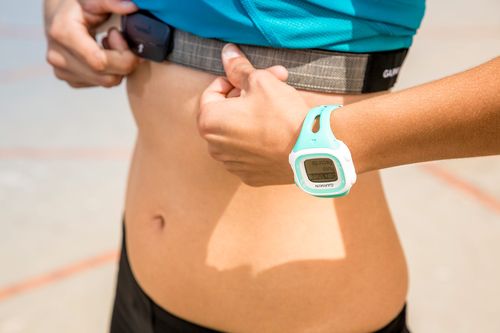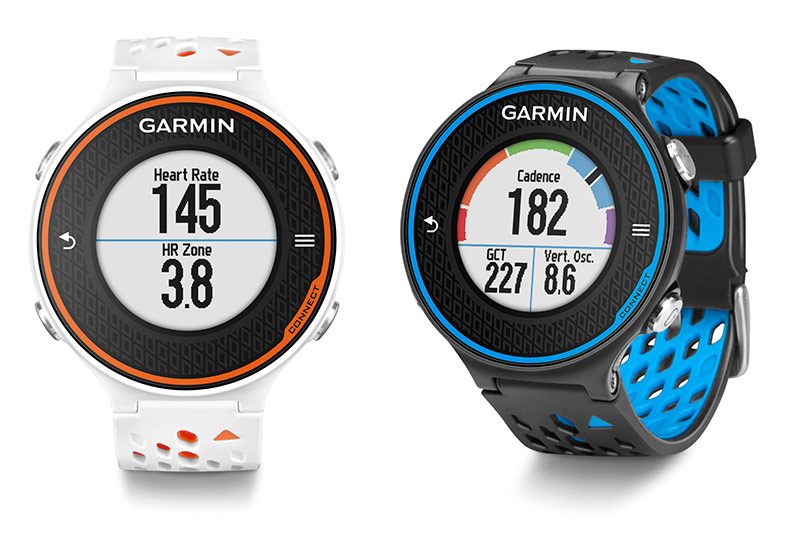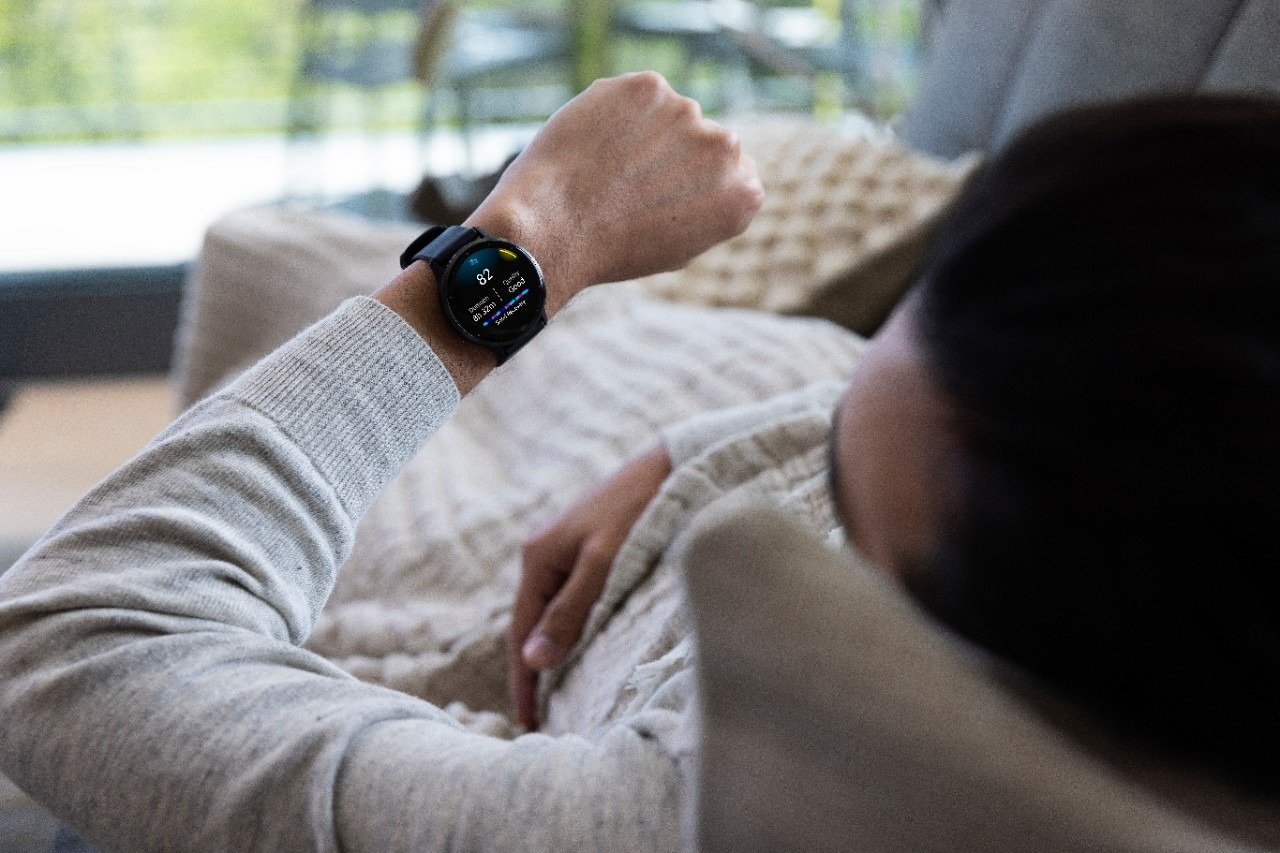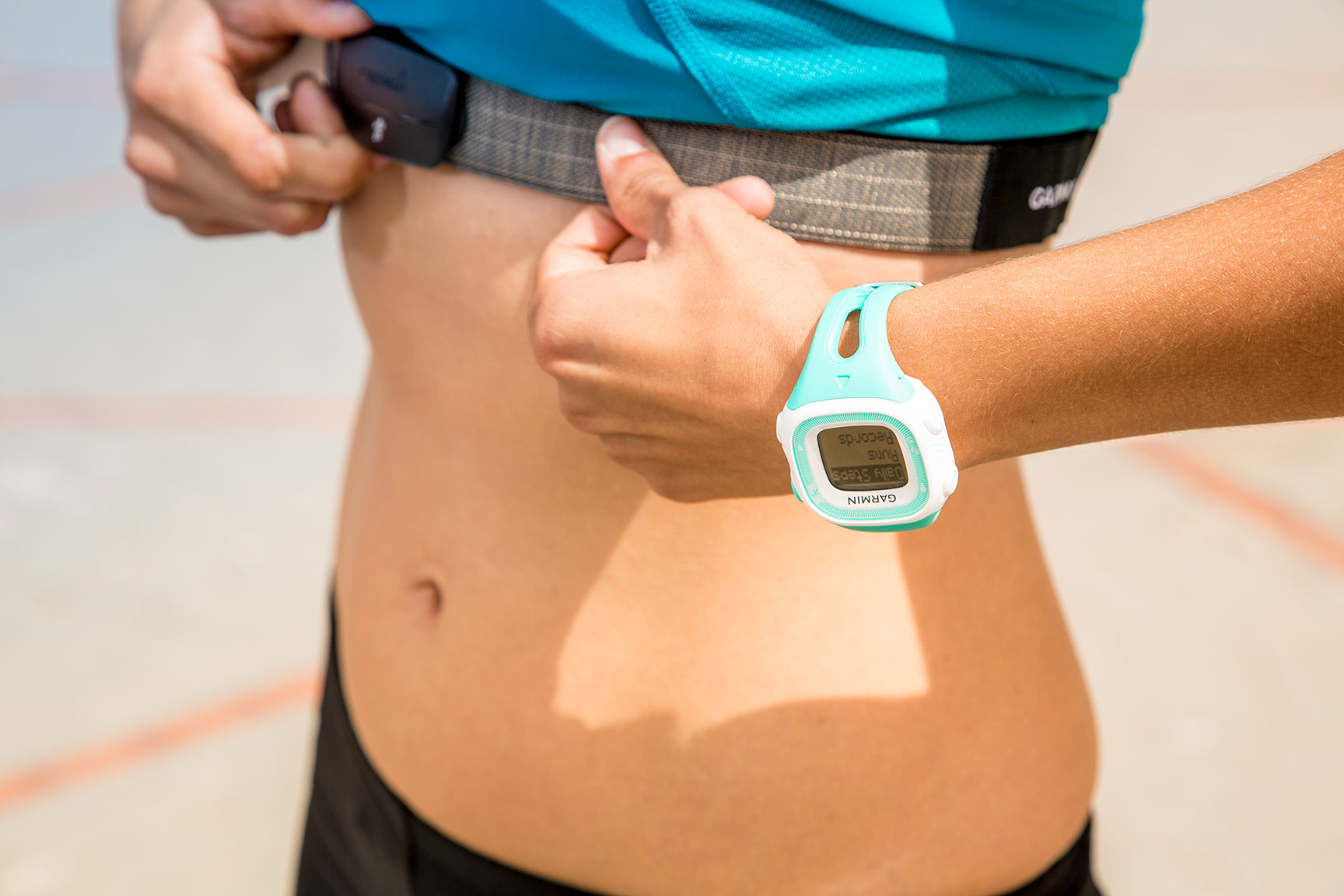
Translating Your Garmin Heart-Rate Monitor Data
Garmin heart-rate monitors (HRM) can help you train for marathons, triathlons and other sporting events by measuring your pulse as you perform physical exercise. Using a Garmin HRM can help you push yourself without training too hard. Available as GPS running watches, wrist-based or chest straps, these devices transmit cardiovascular information to an easy-to-read display. Read on for our advice on understanding (and making the most of) your heart-rate monitor data.
Resting heart-rate
Your resting pulse will form a comparison with your increased heart-rate as you start to exercise. A normal resting heart-rate for an adult is around 60-100 beats per minute, although this can vary based on a number of factors. It is best not to take this initial measurement when feeling unwell or stressed – both factors can raise your heart-rate.
Maximum heart-rate (MHR)
It’s possible to find your maximum heart-rate using maths or your HRM. For men of 18 years +, calculate 220 minus your age. For women of 18 years +, calculate 226 minus your age. Alternatively, run as fast as you can for three minutes, recover with gentle running for a further three minutes, then repeat your three-minute max run. You should reach your maximum heart-rate during the second run. Use your monitor to record your heart-rate during the last part of your effort.
Heart-rate zones
Sustaining your pulse within different heart-rate zones can have different effects on your body. Use your heart-rate monitor to find the optimum heart-rate ranges for you, based on what you want to achieve. The below heart-rate zones should be based on your maximum heart-rate – find the relevant percentage of your MHR and use your monitor to stay on track.
90-100% – Maximum zone
Develops maximum performance and speed
80-90% – Threshold zone
Improves maximum performance capacity (and develops your lactic acid system)
70-80% – Aerobic zone
Increases aerobic capacity and endurance skills
60-70% – Easy zone
Improves basic endurance, overall fitness and fat burning
50-60% – Warm up zone
Running at this paces is very comfortable and is ideal for warming up and cooling down.
Set your heart-rate goal with the new Garmin Forerunner 225
Now you have an understanding of the different heart-rate zones and what they can help your body do, it’s time to consider setting your own goals and limits. Achieve and maintain your desired heart-rate and use your monitor’s simple, easy-to-read display to make sure you’re running at the right intensity. Luckily, the latest Garmin heart-rate technology uses both visual and audio alarms to keep you on the right track – if you’re moving too hard or not hard enough, you’ll soon find out!
Improve your form
Garmin heart-rate monitors can also give you real-time feedback about your running form. This is important if you want to be efficient with your movement. From ground contact time to the bounce in your motion, certain monitors can relay valuable feedback about your running style to help you train more effectively.
Get an accurate reading
If your Garmin heart-rate data isn’t making much sense, it could be the case that your band is in the wrong place or that you are too cold. Make sure your strap fits snugly against your arm or chest, without being tight. In cold conditions, wear warm clothing to keep the Garmin heart-rate monitor close to your body temperature.
The new Forerunner 225 is Garmin’s first wrist-based heart-rate GPS running watch, integrated Garmin’s expertise in wearable technology with the convenience of wrist-based heart-rate monitoring. The Forerunner 225 shows whether a runner is in the warm-up, easy, aerobic, threshold or maximum heart rate zones with a clear coloured gauge, so it is simple to train within your chosen zone.
Garmin Forerunner 620 Advanced Heart Rate Analysis:
When paired with a heart rate monitor, the Garmin Forerunner 620 gives unparalleled insight and guidance into your fitness:
»» VO2 Max: Estimates the maximum volume of oxygen (in Milliliters) you can consume per minute per kilogram of body weight at max performance. VO2 max is an indication of aerobic capability and should increase as your fitness improves.
»» Recovery Advisor: Estimates how much time you need to recover from your run. And at the start of the next run, provides a real time assessment of your recovery so you know how hard you can go.
»» Race Predictor: Projects your finish time for a given race distance based on your current state of fitness and presumed proper training. 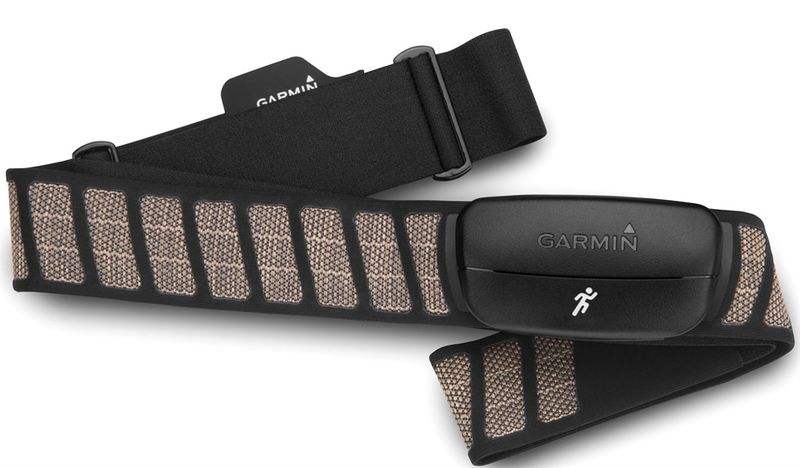
Running Dynamics:
When paired with the Garmin HRM-run, which has a built-in accelerometer to measure torso movement, the Garmin Forerunner 620 gives revolutionary feedback on running form:
»» Cadence: This feature counts total steps (right and left combined). A typical cadence is between 150-200 steps per minute, with 180 steps being the sweet spot.
»» Ground Contact: Forerunner 620 measures how much time, during the running motion, your foot is on the ground rather than in flight. Ground contact time is measured in milliseconds. Most running ground contact times are between 160-300 milliseconds. Elite runners typically spend under 190-milliseconds in contact with the ground each step.
»» Vertical Oscillation: This shows the degree of ‘bounce’ in your running motion. Vertical oscillation is measured in centimetres from a fixed point on your body (sensor on the chest mounted HRM-Run monitor) typical oscillation is between 6-13 cm. Elite runners generally oscillate less.
Find out more about the Garmin Forerunner GPS running watch range.
